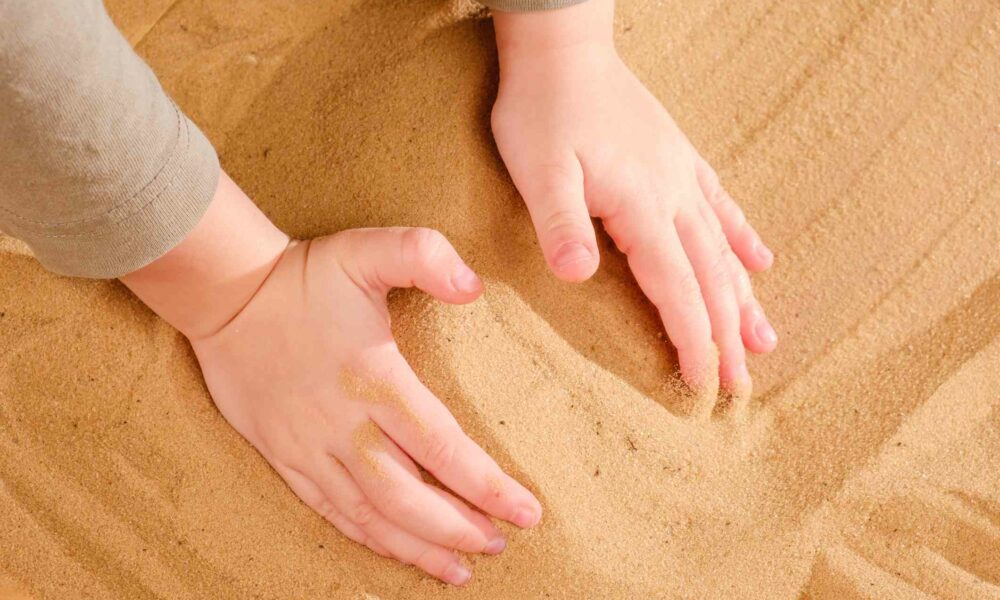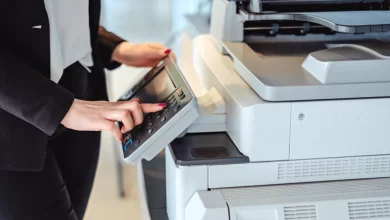6 Creative Expressions for Sand Tray Therapy Training

Sand tray therapy is intended for individuals, but it can be applied in a group setting. It is an expressive therapy where a person constructs their own miniature world to create scenes as a reflection of their lives. This type of therapy is applicable to children, teens, and adults. Therapists are able to receive specific sand tray therapy training.
Benefits of Sand Tray Therapy
Past trauma often makes it difficult for people to verbalize their feelings. Through sand tray therapy, individuals are able to express themselves without words while in a nonthreatening setting. Through creative expression during sand tray therapy, the individual is able to use the sand and materials to manifest the things they may not be able to tell their therapist. The scene becomes a place for a person to resolve conflicts and remove obstacles, leading to self-acceptance and understanding. How a client moves the tray itself or the pieces inside can be interpreted by a trained therapist.
Ways To Incorporate Sand Tray Therapy Expressions
Therapists are able to implement sand tray therapy as a strategy for healing. The client is able to use varying items in the process while the therapist observes and analyzes the interactions. Here are some ways to use creative expressions through sand tray therapy:
1. Use Miniature Figurines
Miniature figures can include any medium representing persons, animals, and natural elements. Therapists are able to provide options such as paper cutouts, Lego figures, toy soldiers, stuffed animals, and more to provide the clients with options of what they’ll connect with. Miniature figures allow clients to work in a metaphorical, third-person perspective, creating a distance from a sensitive topic.
2. Incorporate Water or Blue Trays
Using water in sand tray therapy helps create a more moldable setting for clients to use. Therapists may want to offer a dry tray and a wet tray when working with multiple clients. Water can get messy, so it is sometimes helpful to use a blue tray instead to represent water. Water can be seen as a boundary or to represent a journey.
3. Provide Prompts
Therapists sometimes need to help get the sand tray sessions started, and providing prompts by asking questions is a way to inspire the client to start interacting. A therapist could ask what happened throughout the last week or how they’re feeling that day and tell the client to show them in the tray to prompt a beneficial session.
4. Get Different Types of Sand
Decorative sand comes in many colors, and there are texture variations as well. Offer different colors during the session to provide the client with a choice to expand on their creativity. Provide sand of various textures as well to help with malleability during scene making. Many clients are under stress or feeling anxious during a session, and sand texture variations can be soothing.
5. Offer Open Play During Sessions
Open play is an option that can be used as a soothing activity during a session. It works well with teens, as they see it more as a natural way to relax than a therapy tool. Therapists are still able to assess their actions, but more subtly.
6. Use Trays of Different Sizes and Shapes
The standard size of trays is a shallow rectangle, but therapists can incorporate various depths and sizes to spark more interest from their clients. The tray should be big enough for the client to create appropriate scenes yet small enough to be managed easily. Messier sand types, or sand and water, may need a deeper tray, and young children may need to use a smaller tray.
Sand tray therapy training includes how to use modalities, the origins of the approach, and how to apply the approach to various ages and settings. Topics that therapists can learn more about include:
- Observing the building
- How to take notes or take pictures
- Interpreting the story, expressions, and emotions
- How to work with different cultures and populations
- Mapping the tray
- Relationship of the pieces
- Archetypes and symbols
- Directive versus non-directive trays
Seek Training From Expert Therapists
Sand tray therapy helps a client express what they are experiencing, and therapists actively facilitate their process of awareness and growth. This form of therapy provides a means of communication without having to talk. Sand tray training will prepare therapists on how to use and document sand tray therapy in their practice. Find a qualified therapist to try sand tray therapy today.





